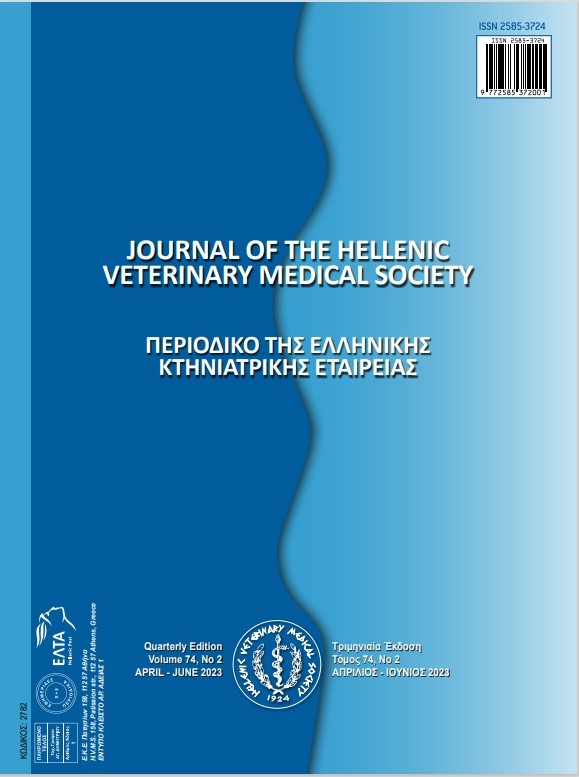Investigation of the Bioactivity of Escin in Hydrogen Peroxide-Induced Oxidative Stress

Περίληψη
Escin is a triterpene saponin obtained from the horse chestnut tree Aesculus hippocastanum L. (Hippocastanaceae). The aim of this study is to investigate the bioactivity of escin against hydrogen peroxide-induced oxidative stress in quails. The study was conducted in male Japanese quails (n=10) with similar pre-experimental weights (Coturnix coturnix japonica) on average. In order to create oxidative stress in quails, hydrogen peroxide was given to drinking water ad libitum for 1 week. At the end of the period, escin was injected intraperitoneally to the quails twice, every other day. The weights of the experimental animals were measured at the beginning and the end of the experiment and compared. In addition, the 10-day live weight change rate and feed consumption rates of the experimental animals were also compared. Total antioxidant (TAC), total oxidant (TOC) and oxidative stress index (OSI) were measured colorimetrically from serum and liver homogenates of animals in the experimental groups. In addition, IL-1β translation levels from serum samples were investigated by ELISA method. According to the data obtained from the study, 10-day body weight change rates increased by 33% in the hydrogen peroxide added group compared to the control group, while an increase of 133% was observed in the escin-treated group. Besides, in serum and liver samples, it was found that escin showed strong antioxidant properties by decreasing the amount of TOC and increasing TAC levels in the group escin administered with hydrogen peroxide, compared to the group administered only with hydrogen peroxide. It was also observed that escin significantly suppressed the levels of IL-1β induced by hydrogen peroxide. As a result, escin was thought to be an alternative molecule in improving growth performance by showing significant antioxidant activity in the prevention of oxidative stress and inflammation in quails. However, multiple trials and detailed molecular analyzes are needed to obtain more detailed information on the subject.
Λεπτομέρειες άρθρου
- Πώς να δημιουργήσετε Αναφορές
-
KÜÇÜKGÜL, A., İşgör, M. M., & Önel, S. E. (2023). Investigation of the Bioactivity of Escin in Hydrogen Peroxide-Induced Oxidative Stress. Περιοδικό της Ελληνικής Κτηνιατρικής Εταιρείας, 74(2), 5821–5828. https://doi.org/10.12681/jhvms.30408 (Original work published 6 Ιούλιος 2023)
- Τεύχος
- Τόμ. 74 Αρ. 2 (2023)
- Ενότητα
- Research Articles

Αυτή η εργασία είναι αδειοδοτημένη υπό το CC Αναφορά Δημιουργού – Μη Εμπορική Χρήση 4.0.
Οι συγγραφείς των άρθρων που δημοσιεύονται στο περιοδικό διατηρούν τα δικαιώματα πνευματικής ιδιοκτησίας επί των άρθρων τους, δίνοντας στο περιοδικό το δικαίωμα της πρώτης δημοσίευσης.
Άρθρα που δημοσιεύονται στο περιοδικό διατίθενται με άδεια Creative Commons 4.0 Non Commercial και σύμφωνα με την άδεια μπορούν να χρησιμοποιούνται ελεύθερα, με αναφορά στο/στη συγγραφέα και στην πρώτη δημοσίευση για μη κερδοσκοπικούς σκοπούς.
Οι συγγραφείς μπορούν να καταθέσουν το άρθρο σε ιδρυματικό ή άλλο αποθετήριο ή/και να το δημοσιεύσουν σε άλλη έκδοση, με υποχρεωτική την αναφορά πρώτης δημοσίευσης στο J Hellenic Vet Med Soc
Οι συγγραφείς ενθαρρύνονται να καταθέσουν σε αποθετήριο ή να δημοσιεύσουν την εργασία τους στο διαδίκτυο πριν ή κατά τη διαδικασία υποβολής και αξιολόγησής της.


